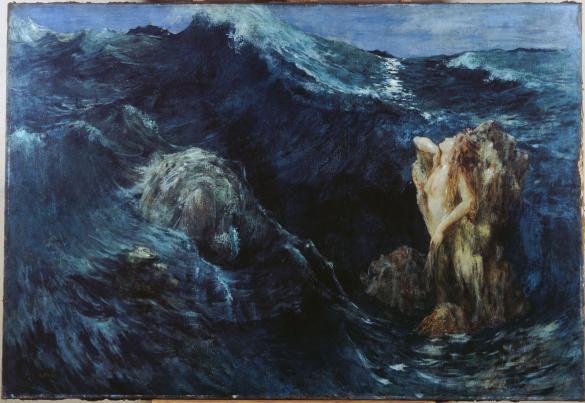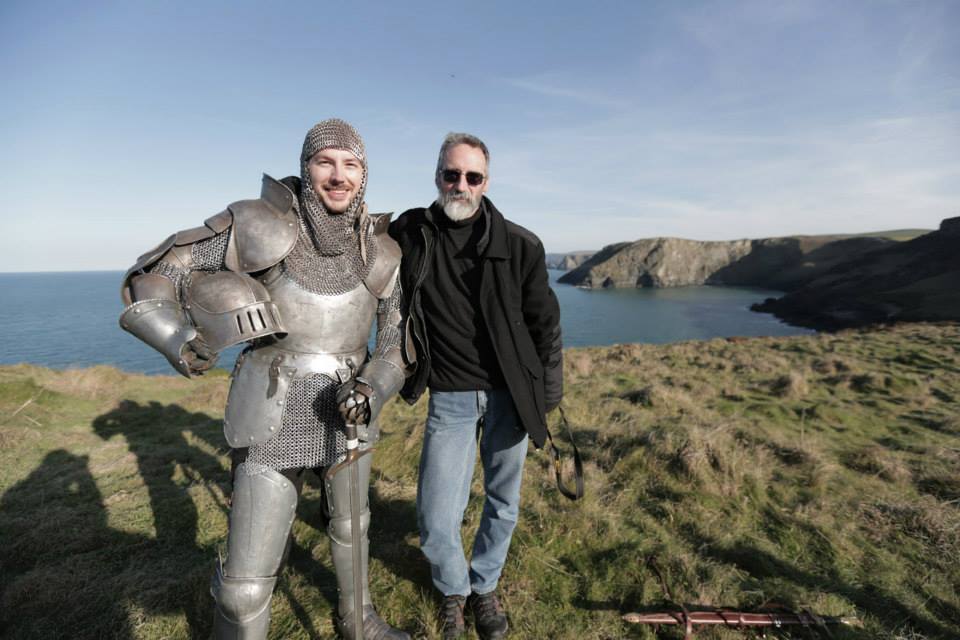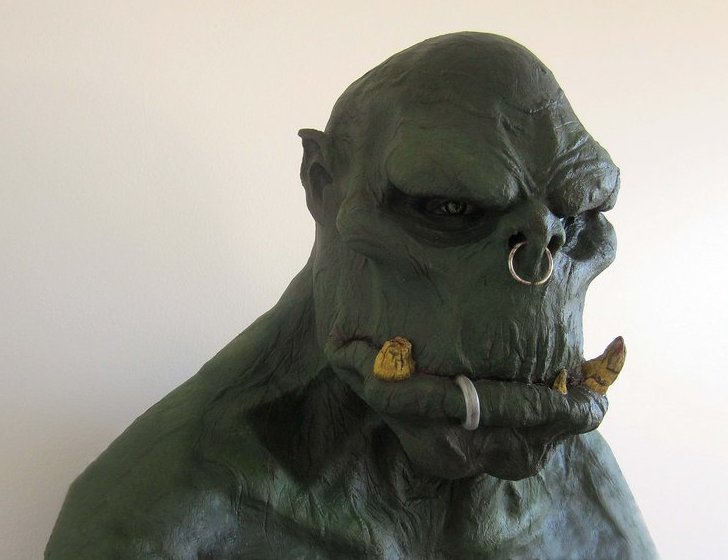|
Watcher In The Water
The Watcher in the Water is a fictional creature in J. R. R. Tolkien's Middle-earth; it appears in ''The Fellowship of the Ring'', the first volume of ''The Lord of the Rings''.''The Fellowship of the Ring'', book 2, ch. 4 "A Journey in the Dark" Lurking in a lake beneath the western walls of the Dwarf (Middle-earth), dwarf-realm Moria (Middle-earth), Moria, it is said to have appeared after the damming of the river Sirannon, and its presence was first recorded by Balin (Middle-earth), Balin's dwarf company 30 or so years before the beginning of ''The Fellowship of the Ring''. The origins of the creature are not described in Tolkien's works, but critics have compared it to the legendary kraken and to Odysseus's passage between the devouring Scylla and the whirlpool Charybdis. Its presence in combination with the barrier lake and the formidable Doors of Durin have been likened to the multiple obstacles often found in Norse mythology. Literature In ''The Lord of the Rings'', the F ... [...More Info...] [...Related Items...] OR: [Wikipedia] [Google] [Baidu] |
John Howe (illustrator)
John Howe (born August 21, 1957) is a Canadian book illustrator and conceptual designer, best-known for his artwork of J. R. R. Tolkien's Middle-earth. One year after graduating from high school, he studied in a college in Strasbourg, France, then at the École des arts décoratifs in the same town. Howe and Tolkien artist Alan Lee served as chief conceptual designers for Peter Jackson's ''The Lord of the Rings'' movie trilogy. Howe illustrated the ''Lord of the Rings'' board game created by Reiner Knizia, and re-illustrated the maps of ''The Lord of the Rings'', ''The Hobbit'', and ''The Silmarillion'' in 1996–2003. His work includes images of mythological material such as the Old English epic poem ''Beowulf'' (including Knizia's board game '' Beowulf: The Legend''). Howe illustrated many books in the fantasy genre, such as those by Robin Hobb. He also contributed to the film adaptation of ''The Lion, the Witch, and the Wardrobe'' by C. S. Lewis, ''The Chronicles of Narnia ... [...More Info...] [...Related Items...] OR: [Wikipedia] [Google] [Baidu] |
Misty Mountains
The geography of Middle-earth encompasses the physical, political, and moral geography of J. R. R. Tolkien's fictional world of Middle-earth, strictly a continent on the planet of Arda but widely taken to mean the physical world, and ''Eä'', all of creation, as well as all of his writings about it. Arda was created as a flat world, incorporating a Western continent, Aman, which became the home of the godlike Valar, as well as Middle-earth. At the end of the First Age, the Western part of Middle-earth, Beleriand, was drowned in the War of Wrath. In the Second Age, a large island, Númenor, was created in the Great Sea, Belegaer, between Aman and Middle-earth; it was destroyed in a cataclysm near the end of the Second Age, in which Arda was remade as a spherical world, and Aman was removed so that Men could not reach it. In ''The Lord of the Rings'', Middle-earth at the end of the Third Age is described as having free peoples, namely Men, Hobbits, Elves, and Dwarves in the West ... [...More Info...] [...Related Items...] OR: [Wikipedia] [Google] [Baidu] |
Utumno
Middle-earth is the fictional setting of much of the English writer J. R. R. Tolkien's fantasy. The term is equivalent to the ''Miðgarðr'' of Norse mythology and ''Middangeard'' in Old English works, including '' Beowulf''. Middle-earth is the human-inhabited world, that is, the central continent of the Earth, in Tolkien's imagined mythological past. Tolkien's most widely read works, ''The Hobbit'' and ''The Lord of the Rings'', are set entirely in Middle-earth. "Middle-earth" has also become a short-hand term for Tolkien's legendarium, his large body of fantasy writings, and for the entirety of his fictional world. Middle-earth is the main continent of Earth (Arda) in an imaginary period of the Earth's past, ending with Tolkien's Third Age, about 6,000 years ago. Tolkien's tales of Middle-earth mostly focus on the north-west of the continent. This part of Middle-earth is suggestive of Europe, the north-west of the Old World, with the environs of the Shire reminiscen ... [...More Info...] [...Related Items...] OR: [Wikipedia] [Google] [Baidu] |
Morgoth
Morgoth Bauglir (; originally Melkor ) is a character, one of the godlike Valar, from Tolkien's legendarium. He is the main antagonist of ''The Silmarillion'', ''The Children of Húrin'', ''Beren and Lúthien'' and ''The Fall of Gondolin''. Melkor was the most powerful of the Valar but turned to darkness and was renamed Morgoth, the definitive antagonist of Arda. All evil in the world of Middle-earth ultimately stems from him. One of the Maiar of Aulë betrayed his kind and became Morgoth's principal lieutenant and successor, Sauron. Melkor has been interpreted as analogous to Satan, once the greatest of all God's angels, Lucifer, but fallen through pride; he rebels against his creator. Scholars have likened Morgoth, too, to John Milton's fallen angel in ''Paradise Lost''. Tom Shippey has written that ''The Silmarillion'' maps the book of Genesis with its creation and its fall, even Melkor having begun with good intentions. Marjorie Burns has commented that Tolkien used the ... [...More Info...] [...Related Items...] OR: [Wikipedia] [Google] [Baidu] |
Pan Books
Pan Books is a publishing imprint that first became active in the 1940s and is now part of the British-based Macmillan Publishers, owned by the Georg von Holtzbrinck Publishing Group of Germany. Pan Books began as an independent publisher, established in 1944 by Alan Bott, previously known for his memoirs of his experiences as a flying ace in the First World War. The Pan Books logo, showing the ancient Greek god Pan playing pan-pipes, was designed by Mervyn Peake. A few years after it was founded, Pan Books was bought out by a consortium of several publishing houses, including Macmillan, Collins, Heinemann, and, briefly, Hodder & Stoughton. It became wholly owned by Macmillan in 1987. Pan specialised in publishing paperback fiction and, along with Penguin Books, was one of the first popular publishers of this format in the UK. Many popular authors saw their works given paperback publication through Pan, including Ian Fleming, whose James Bond series first appeared in pape ... [...More Info...] [...Related Items...] OR: [Wikipedia] [Google] [Baidu] |
Dragon (Middle-earth)
J. R. R. Tolkien John Ronald Reuel Tolkien (, ; 3 January 1892 – 2 September 1973) was an English writer and philologist. He was the author of the high fantasy works ''The Hobbit'' and ''The Lord of the Rings''. From 1925 to 1945, Tolkien was the Rawlins ...'s Middle-earth legendarium features western dragon, dragons based on those of European legend, but going beyond them in having personalities of their own, such as the wily Smaug, who has features of both Fafnir and The Beowulf Dragon, the ''Beowulf'' dragon. Dragons appear in the early stories of ''The Book of Lost Tales'', including the mechanical war-dragons of ''The Fall of Gondolin''. Tolkien went on to create Smaug, a powerful and terrifying adversary, in ''The Hobbit''; dragons are only mentioned in passing in ''The Lord of the Rings''. Tolkien's conception of the dragon has been adopted both in games loosely based on his Middle-earth writings, and by other fantasy authors. Several taxa have been named a ... [...More Info...] [...Related Items...] OR: [Wikipedia] [Google] [Baidu] |
The Complete Guide To Middle-earth
''The Complete Guide to Middle-earth: from ''The Hobbit'' to ''The Silmarillion is a reference book for the fictional universe called Middle-earth of J. R. R. Tolkien's legendarium, compiled and edited by Robert Foster. It was first published in 1971 under the title ''A Guide to Middle-earth''. A revised and enlarged edition under the title ''The Complete Guide to Middle-earth'' was published in 1978. It received a third edition in 2001. Author Robert Foster (b. 1949, Brooklyn) earned a Ph.D. in English and Medieval Studies at the University of Pennsylvania, and taught subsequently in the English Department at Rutgers University. Foster begun work on this in the late sixties, consulting Tolkien works and letters. ''A Guide to Middle-earth'' The 1971 ''A Guide to Middle-earth'' was the first published encyclopedic reference book for the fictional universe of J. R. R. Tolkien's Middle-earth, compiled and edited by Robert Foster. The book was published in 1971 by Mirage Press, ... [...More Info...] [...Related Items...] OR: [Wikipedia] [Google] [Baidu] |
Óin, Son Of Gróin
This article describes all named characters appearing in J. R. R. Tolkien's 1937 book ''The Hobbit''. Creatures as collectives are not included. Characters are categorized by race. Spelling and point of view are given as from ''The Hobbit''. Hobbits * Bilbo Baggins of Bag End, the protagonist and titular hobbit of the story.''The Hobbit'', ch. 1 "An Unexpected Party" * Bungo Baggins, Bilbo's father. (mentioned only) * Belladonna Took, Bilbo's mother. (mentioned only) * The Old Took, Bilbo's maternal grandfather. (mentioned only) * Grubb, Grubb, and Burrowes, auctioneers managing the liquidation of Bilbo's effects.''The Hobbit'', ch. 19 "The Last Stage" Both names are connected with digging. * The Sackville-Bagginses, acquisitive cousins to Bilbo. * Bullroarer Took, a historical figure mentioned as the Old Took's great grand-uncle, and therefore Bilbo's great great great grand-uncle. However, according to the family tree published in Appendix C of ''The Lord of the Rings'', Bullr ... [...More Info...] [...Related Items...] OR: [Wikipedia] [Google] [Baidu] |
Ori (Middle-earth)
This article describes all named characters appearing in J. R. R. Tolkien's 1937 book ''The Hobbit''. Creatures as collectives are not included. Characters are categorized by race. Spelling and point of view are given as from ''The Hobbit''. Hobbits * Bilbo Baggins of Bag End, the protagonist and titular hobbit of the story.''The Hobbit'', ch. 1 "An Unexpected Party" * Bungo Baggins, Bilbo's father. (mentioned only) * Belladonna Took, Bilbo's mother. (mentioned only) * The Old Took, Bilbo's maternal grandfather. (mentioned only) * Grubb, Grubb, and Burrowes, auctioneers managing the liquidation of Bilbo's effects.''The Hobbit'', ch. 19 "The Last Stage" Both names are connected with digging. * The Sackville-Bagginses, acquisitive cousins to Bilbo. * Bullroarer Took, a historical figure mentioned as the Old Took's great grand-uncle, and therefore Bilbo's great great great grand-uncle. However, according to the family tree published in Appendix C of ''The Lord of the Rings'', Bullr ... [...More Info...] [...Related Items...] OR: [Wikipedia] [Google] [Baidu] |
Book Of Mazarbul
Tolkien's artwork was a key element of his creativity from the time when he began to write fiction. The philologist and author J. R. R. Tolkien prepared illustrations for his Middle-earth fantasy books, facsimile artefacts, more or less "picturesque" maps, calligraphy, and sketches and paintings from life. Some of his artworks combined several of these elements to support his fiction. In his lifetime, some of his artworks were included in his novels ''The Hobbit'' and ''The Lord of the Rings''; others were used on the covers of different editions of these books. Posthumously, collections of his artworks have been published, and academics have begun to evaluate him as an artist as well as an author. Influences Influences on Tolkien's artwork identified by scholars include Japonisme, Art Nouveau, Viking design, and William Morris. Japonisme is seen in stylised features like Tolkien's mountains, waves, and dragons. Morris's book ''Some Hints on Pattern Designing'', which Tolki ... [...More Info...] [...Related Items...] OR: [Wikipedia] [Google] [Baidu] |
Orc (Middle-earth)
An Orc (or Ork) is a fictional humanoid monster like a goblin. Orcs were brought into modern usage by the fantasy writings of J. R. R. Tolkien, especially ''The Lord of the Rings''. In Tolkien's works, Orcs are a brutish, aggressive, ugly, and malevolent race of monsters, contrasting with the benevolent Elves. There is a suggestion, among several somewhat contradictory origin stories, that they are a corrupted race of elves. Mythological monsters with names similar to "orc" can be found in the Old English poem ''Beowulf'', in Early Modern poetry, and in Northern European folk tales and fairy tales. Tolkien stated that he took the name from ''Beowulf''. The orc appears on lists of imaginary creatures in two of Charles Kingsley's mid-1860s novels. Tolkien's concept of orcs has been adapted into the fantasy fiction of other authors, and into games of many different genres such as ''Dungeons & Dragons'', ''Magic: The Gathering'', and ''Warcraft''. Etymology Old English ... [...More Info...] [...Related Items...] OR: [Wikipedia] [Google] [Baidu] |




